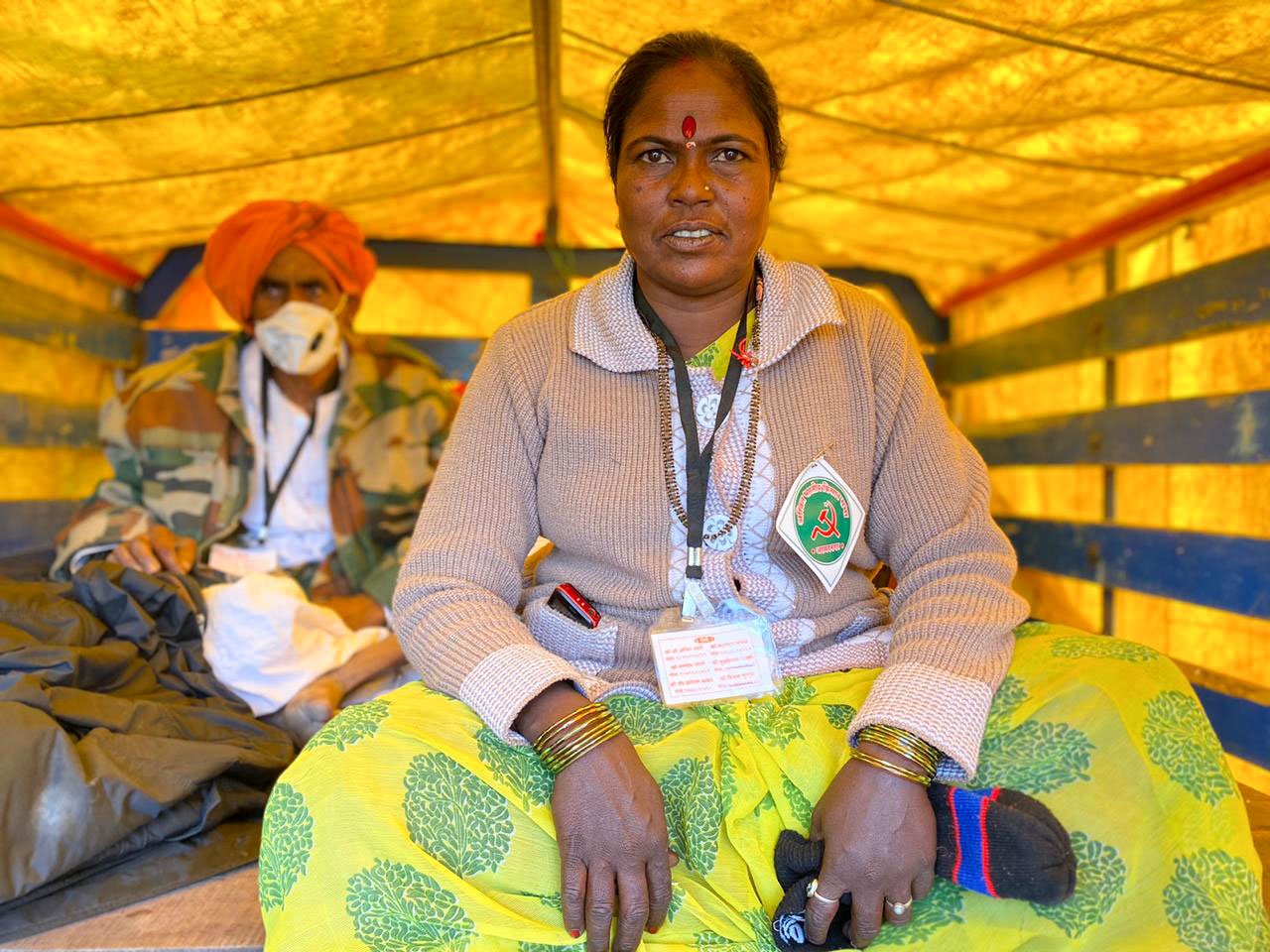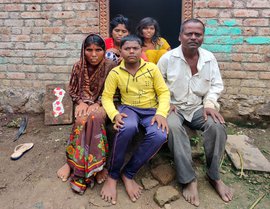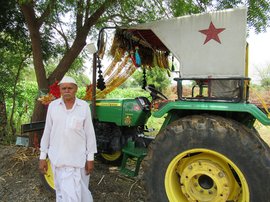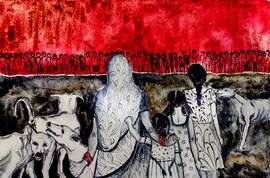The group of farmers at the roadside dhaba was distracted by the strains of a flute. It was cold that morning of December 22 in Chandvad town – about 65 kilometres from Nashik city – and they were waiting for tea. Some were half-asleep and a few were polishing off misal pav for breakfast. But Narayan Gaikwad, a 73-year-old farmer from Kolhapur district’s Jambhali village, was playing the flute. He was keeping to his morning ritual even 500 kilometres away from home. “People say the agitations in Delhi are limited to farmers from Punjab and Haryana," he said. "We want to point out it is a national issue.”
Gaikwad was a part of the group of 2,000 farmers, farm labourers and activists making their way to Delhi in a vehicle jatha (convoy), which had started from Nashik on December 21. But Gaikwad’s journey began a day before that. “Seven of us got into the tempo and arrived in Nashik on the night of the 20th. It took us about 13 hours to get there," he said. "Travel by road gets tougher with age. But I decided to come because I believe in Bhagat Singh’s idea of India. Farmers’ problems won’t end unless there is a revolution.”
Lakhs of farmers, mainly from Punjab and Haryana, have braved police tear gas, lathi charge, biting cold and rain to stage protests along the borders of Delhi. They have been protesting against the three farm laws that the central government first issued as ordinances on June 5, 2020, then introduced as farm bills in Parliament on September 14, and hastened through to become Acts by the 20th of that month.
The laws are: The Farmers’ Produce Trade and Commerce (Promotion and Facilitation) Act, 2020 ; The Farmers (Empowerment and Protection) Agreement on Price Assurance and Farm Services Act. 2020 ; and The Essential Commodities (Amendment) Act, 2020 . The laws have also been criticised as affecting every Indian as they disable the right to legal recourse of all citizens, undermining Article 32 of the Indian Constitution.
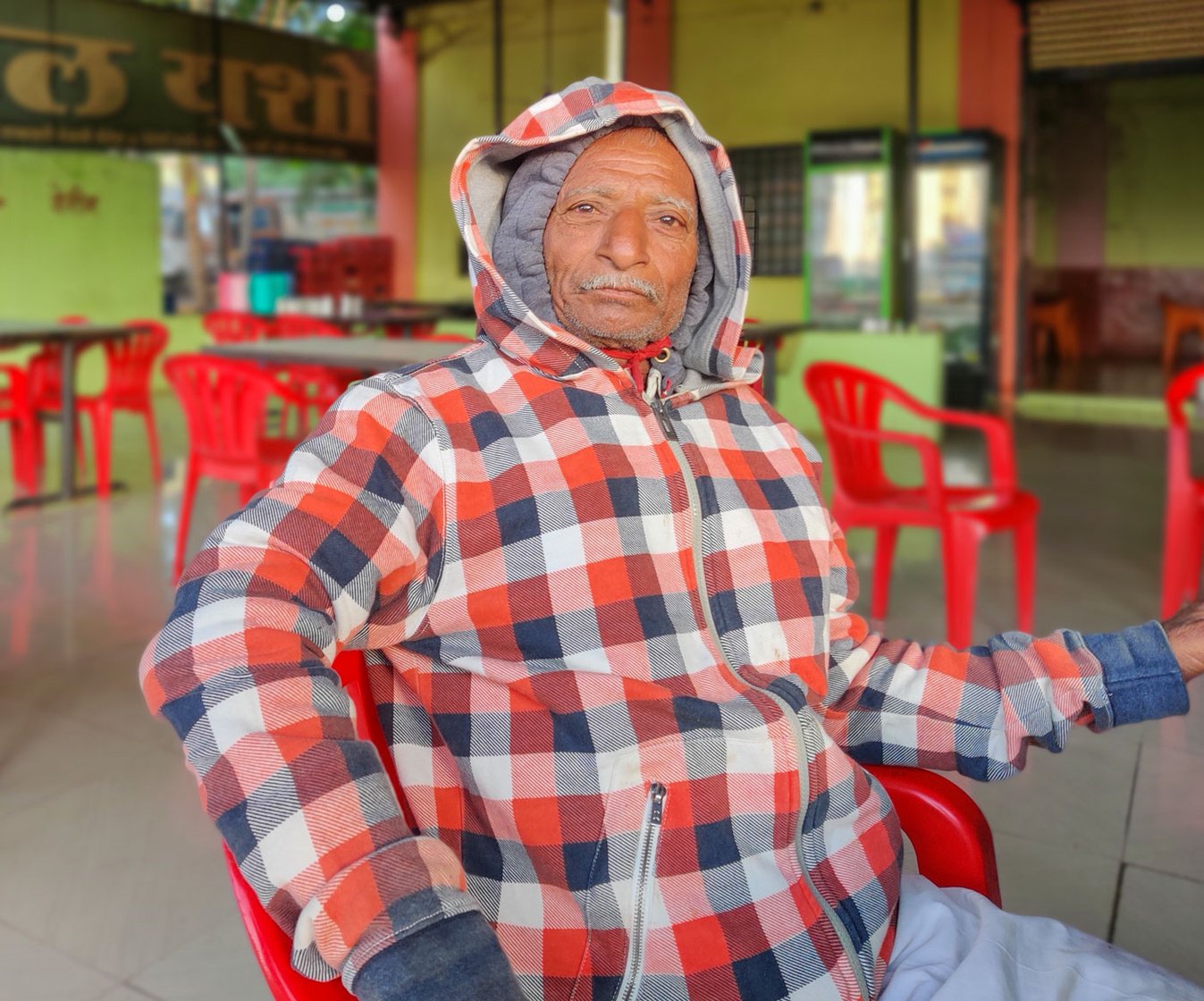
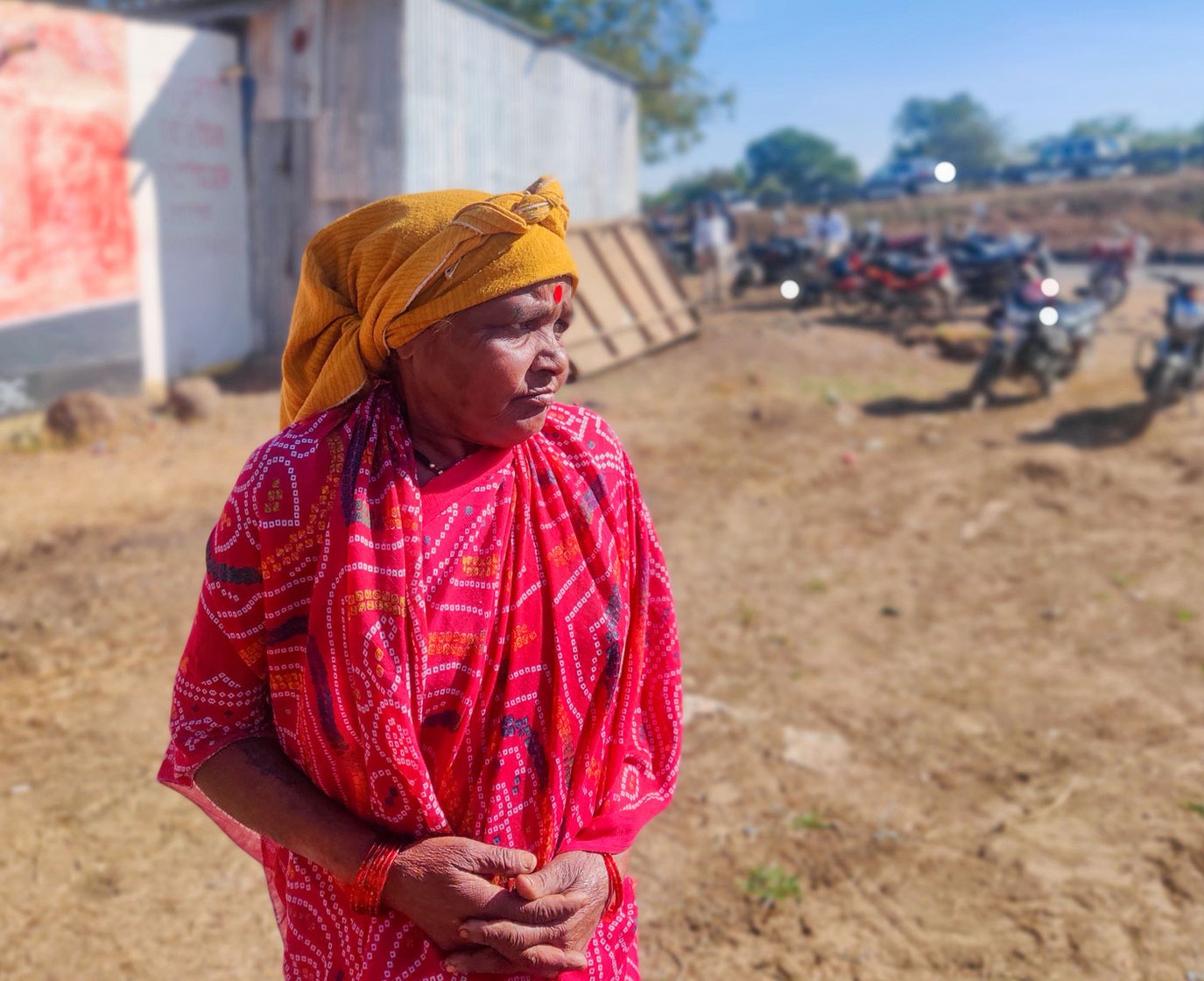
Left: Narayan Gaikwad came from Kolhapur to join the march. Right: Kalebai More joined the jatha in Umarane
To express their solidarity, farmers from across 20 districts of Maharashtra, mobilised by the All India Kisan Sabha (AIKS), decided to join their northern counterparts.
On the afternoon of December 21 – when AIKS leaders gave speeches to the farmers assembled at Golf Club Ground in Nashik – about 50 trucks, tempos and four-wheelers formed the convoy. The jatha set off on a 1,400-kilometre journey soon after. Chandvad was the first stop; the farmers camped for the night at a secondary school there. A bonfire was lit to keep them warm while they ate khichdi for dinner. They then wrapped themselves in their blankets and sweaters and went to bed.
Gaikwad had brought four shawls for the journey. “We are traveling in the jeep and it gets windy,” he told me in the morning, eating upma. We were in Umarane village in Deola taluka , where the jatha had stopped for breakfast 20 kilometres from Chandvad.
In his village, Gaikwad owns three acres of land, on which he cultivates sugarcane. He also has two buffaloes and three cows. “One of the farm bills make the APMCs [agricultural produce market committees] redundant, and the government says it will bring in more private entities. There are enough private players in the dairy sector. Yet we hardly get any returns. Private companies are only interested in their own profit,” he said.
When Gaikwad was eating breakfast, Kalebai More, a 65-year-old farm labourer, was frantically looking for a seat. She was joining the jatha at Umrane. “All the tempos are packed,” she told me, agitated. “They cannot hire a separate one for me. I really want to go to Delhi.”
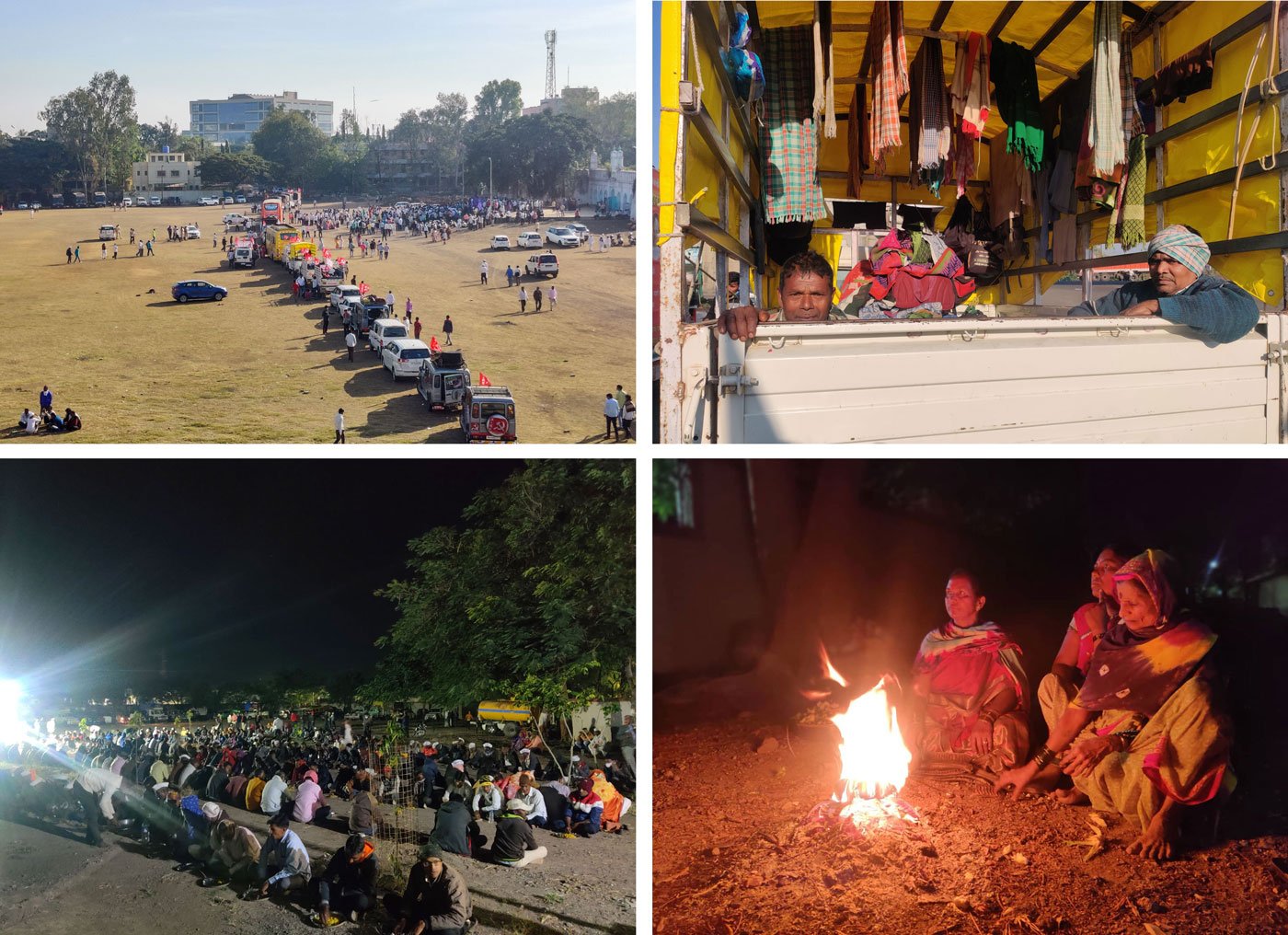
Top left: Left: The vehicles assembled at Golf Club Ground in Nashik. Top right: Farmers travelled in open-back tempos in the cold weather. Bottom: The group had dinner in Chandvad. They lit bonfires to keep themselves warm at night
Clad in a pink printed saree, Kalebai, from Shindwad village in Nashik’s Dindori
taluka
, was pacing up and down, scanning the vehicles. She reasoned, implored and even yelled at the drivers. Eventually, someone made room for her in a tempo, and her angry face wore a look of relief. She adjusted her saree and climbed in. Her face soon broke into a childlike smile.
“I am an agricultural labourer earning Rs. 200 in daily wages,” she told me. “I am willing to give it up to take part in the protest.” Kalebai, who depends on other farmers for employment, said it becomes tough when farmers don’t earn from their harvest. “When they don’t make money, they don’t employ labourers like me,” she said. “If their production costs go up because of the increase in power bills, it reduces my work as well.”
Kalebai belongs to the Koli Mahadev Adivasi tribe. In Shindwad, she does subsistence farming on a two-acre plot of land that comes under the forest department. Farmers like her, in Nashik’s Adivasi belt, have been fighting for their land rights with little success.
Ashok Dhawale, president of AIKS, who was travelling with the jatha , says the forest-dwelling Adivasis all over India have had bad experiences with large corporations. “These three bills pave the way for more corporatisation, which is what the Adivasis want to resist,” he said. “It is one of the reasons why there are so many of them in the jatha .”
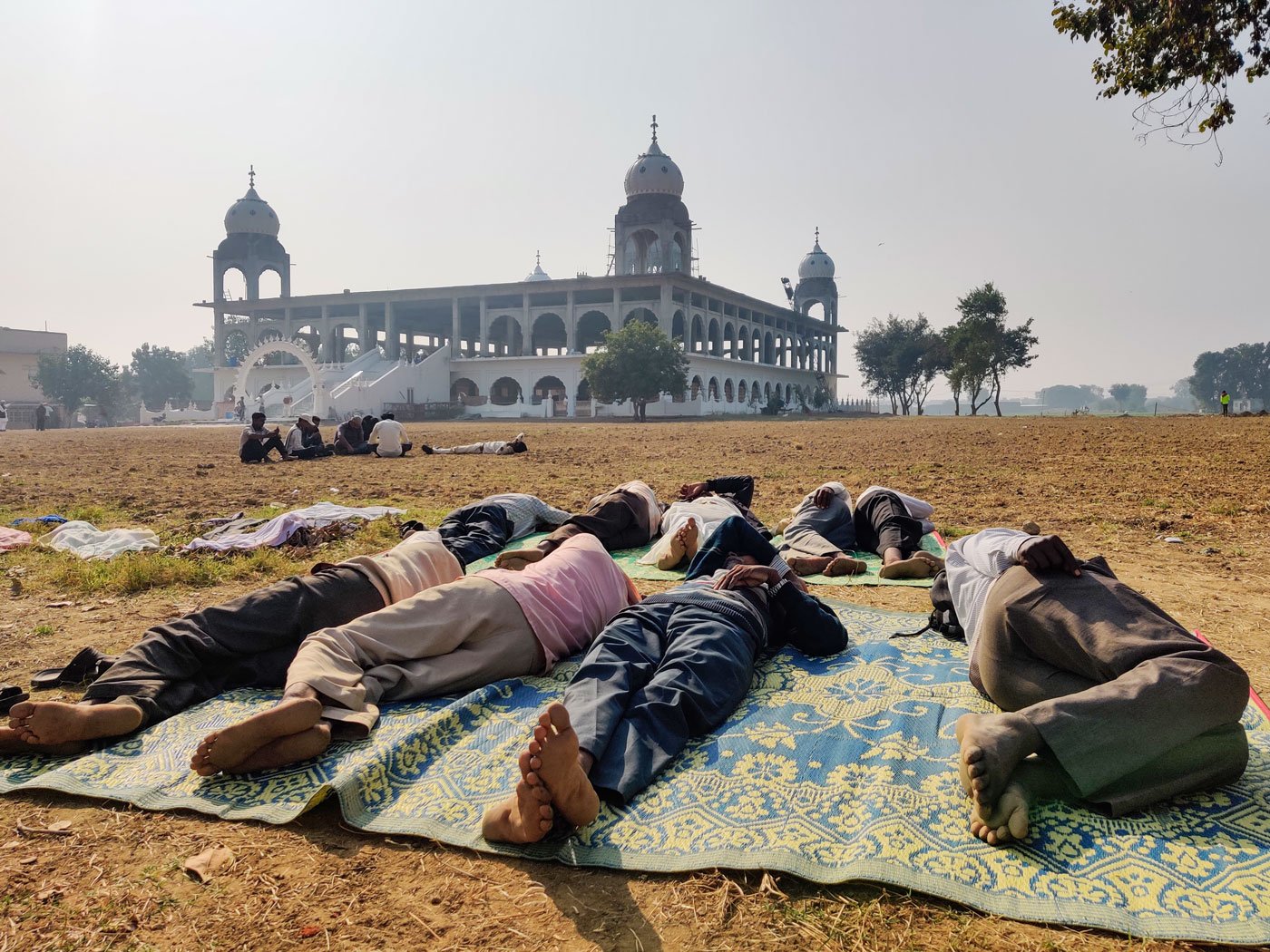
The farmers rested near the gurudwara in Kota after a meal
The
jatha
covered 150 kilometers on December 22 and halted in Dhule district’s Shirpur town – about 40 kilometres from the Madhya Pradesh border. Thick sweaters came out as the day and the journey had progressed. The biting cold intensified and some in the group decided to turn back. Gaikwad suffered a back problem. “I cannot make it to Delhi,” he told me the next morning. Some others returned because they could not afford to be away from work for more than 2-3 days.
On December 23 – the third day of the jatha – about 1,000 people pressed on towards Delhi.
As it moved on on its long journey, the
jatha
was received in cities and towns it passed through. Even though the vehicle march was mobilised by the AIKS, affiliated with the Communist Party of India (Marxist), other political parties including Shiv Sena and Congress, extended solidarity. Social activists too met the
jatha
.
At Sendhwa, a town in Barwani district of Madhya Pradesh, the activist Medha Patkar received the farmers. She raised slogans critical of the central government and led the march for a short distance.
But the receptions in Madhya Pradesh lasted longer than planned. By 10 p.m. the jatha had reached only the outskirts of Indore – about 320 kilometers away from Kota in Rajasthan, where the march was to have reached that night.
After much deliberation, the group decided to continue towards Rajasthan. The vehicles drove through the cold night, getting to Kota at 7 a.m. on December 24.
But the farmers in open-back tempos bore chilly winds throughout the night. Mathura Barde, 57, from Shindodi village in Ahmadnagar district, said she was freezing even though she had on three layers of clothes. “I didn’t have more layers to put on. I covered my ears and somehow managed to get through the night,” she said, while having a meal at the langar (community kitchen) in a gurudwara, in the morning. The Sikh community of the city had hosted the farmers and served them roti , chana dal gravy and khichdi . The exhausted group of travellers then rested near the gurudwara , soaking in the sun.
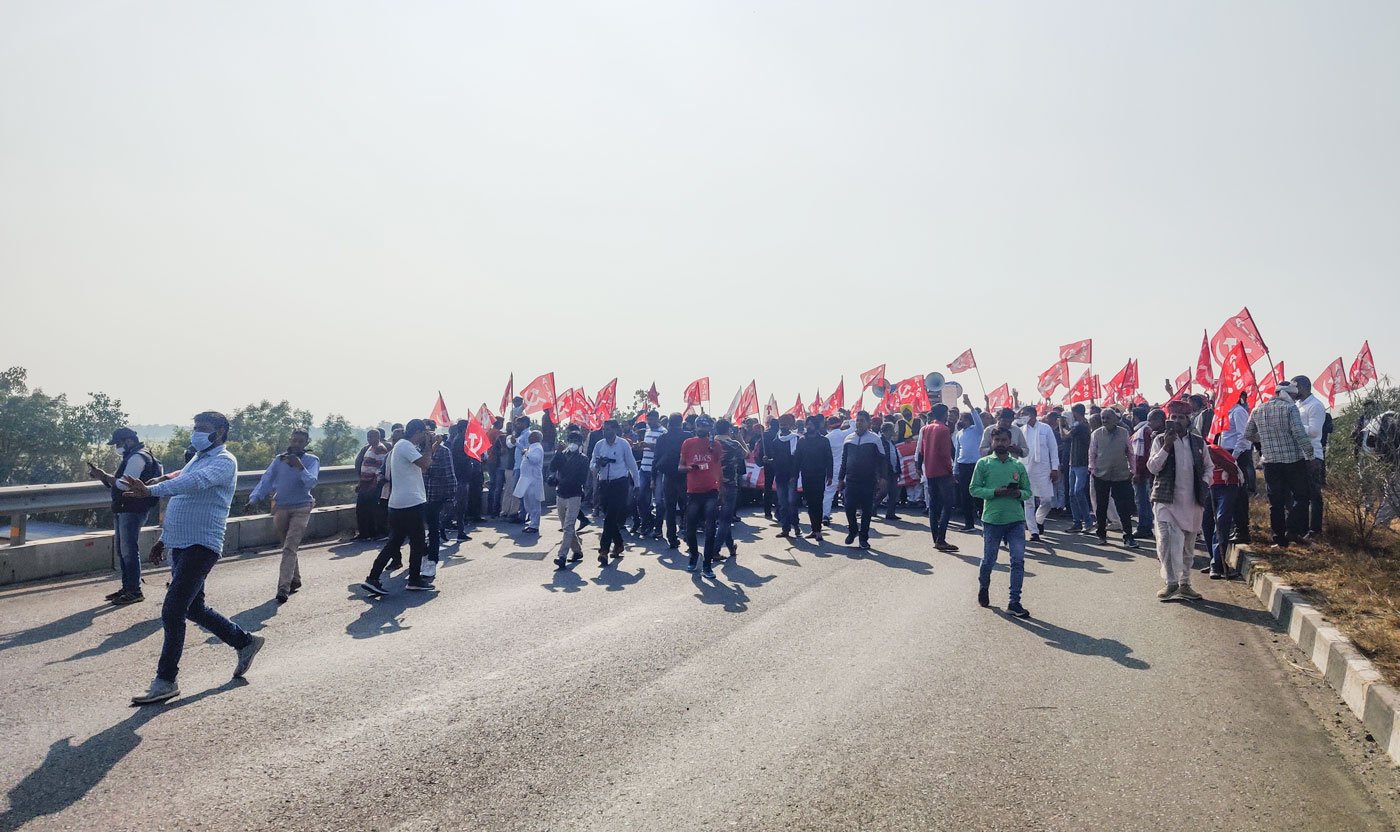
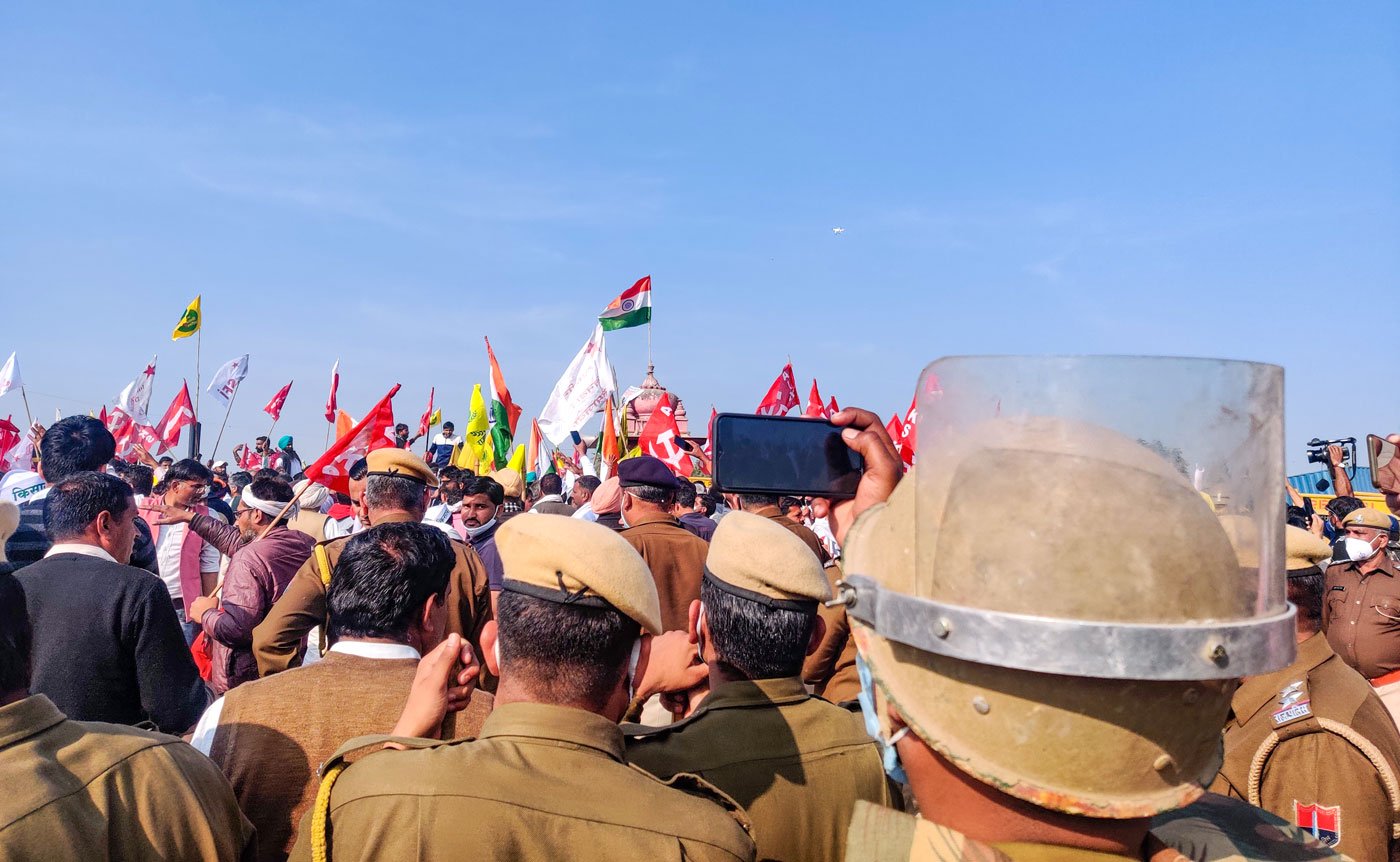
Left: Farm leaders walked up to the barricades upon arriving in Shahjahanpur. Right: A policeman quickly takes a photo
The vehicle march covered 250 kilometers on December 24 and halted in Jaipur for the night.
It finally reached Shahjahanpur, on the border of Rajasthan and Haryana, at about 12.30 p.m. on December 25. The atmosphere at the protest site was electrified by the jatha 's arrival. The farmers who welcomed the Maharashtra group had been staging a sit-in along National Highway 48 (NH48), for over two weeks by then.
The farm leaders got down from their vehicles and walked the last kilometre, right up to the barricades put up by the Haryana government. Some of the policemen behind the barricades were themselves the children of farmers, they told me. One of them pulled out his mobile phone and quickly took a photo of the approaching farmers, then slipped it back into his pocket.
The farm leaders delivered speeches at the protest site all afternoon. In the evening, when it got colder, more tents came up on NH48 to accommodate the Maharashtra farmers. It had taken resolve and courage to get to Delhi, but their struggles had only just begun.
Cover photo: Shraddha Agarwal
